Abstract 5/2014
Table of content
Wojciech Dinges, Damian Bzdyrek – Selected aspects of the public road transport in the Silesian Voivodeship in the light of researches
Michał Beim – Research on passenger satisfaction in the Arriva RP trains
Daniel Kaszubowski, Piotr Meller – Measures for improvement of bus public transport system in Lębork
Grzegorz Krawczyk – Methods of measuring the urban transport market concentration
Sławomir Goliszek – Improving public transport accessibility in Olsztyn in the light of the EU 2014-2020 programming period infrastructure investments
Abstracts
Wojciech Dinges, Damian Bzdyrek
Selected aspects of the public road transport in the Silesian Voivodeship in the light of researches
Abstract: The paper refers to the public road transport in the Silesian Voivodeship. The analysis focuses on private and public companies providing transport services, their cooperation with public transport organisations and their areas of operation. The transport companies have been classified into three categories providing: local (intra-voivodeship), inter-voivodeship and international transport. The data have been collected on basis of operators’ time-schedules, time-schedule internet portals, personal observations and experiences on selected stops or bus stations, data bases of public transport organisations and the Marshall Office as well as with villages or municipal offices. The paper focuses especially on local services. The access of places and districts to public transport services has been presented and categorized. The geographical differentiation among voivodeship’s subregions has been highlighted as well as significant quantitative dispersion of the service providers and risk related to limited access to the public transport on some areas, where is provided by single operator. There are some conclusions and recommendations related to local transport services, i.a. necessity of private and public transport system harmonisation and collection of data concerning total passenger transport offer in one place for easy public access.
Keywords: public transport, road passenger transport, transport services, transport accessibility,
Michał Beim
Research on passenger satisfaction in the Arriva RP trains
Abstract: The competition on the Polish rail market evokes a wide public debate. The division of passenger services between various companies has been evaluated as negative process and the main reason of chaos in Polish railways. Research on passengers’ satisfaction done in the Arriva Rail Polska trains shows that competition could bring benefits to passenger. This paper presents the results of structured interview conducted in 2013, on 685 passengers. This research was examined four years after first research for Arriva [1]. It confirms the good opinions on the independent passenger rail operator. The Arriva RP has been rated the company among all carriers operating in the Kuyavian-Pomeranian Voivodeship. Passengers especially appreciated good manners of the staff and good vehicles maintenance. They criticized lack of available seats, too few courses and acoustic climate in vehicles. Passenger’s expectations from the carrier relate primarily to increase of the number of courses in the off-peak hours and launch of online tickets sales. A serious barrier to the regional rail development is the condition of rail stations and tracks which is dependent on the rail carrier.
Key words: passenger transport, rail transport, transport quality, passenger’s preferences
Daniel Kaszubowski, Piotr Meller
Measures for improvement of bus public transport system in Lębork
Abstract: The paper presents selected measures to improve efficiency of bus public transport services in Lębork. The study was aimed at recognition of problem areas and appointment of solutions that can result with increase of public transport competiveness and better use of carrier’s resources. Demand analysis was conducted with identification of city-specific factors like alternative modes of transportation availability, weather influence on the passenger number or observed tendency to one way bus rides. Comparison of demand with the supply level revealed that available bus places utilization was only 28%. Consequently bus service characteristic was analyzed to find potential drawbacks. The analysis of the transport offer of the ZKM Lębork has been made with reference to the basic rules of public transport lines shaping. The analysis contributed with conclusions concerning main problems like delays at the main route in the city center, irregularity of bus departures and lack of timetable coordination with the SKM (city and suburban train), together with unsuitable fleet characteristic. For each of the problem areas appropriate solutions have been suggested. They include change of the course of selected lines in the centre, optimization of timetables and verification of purchase of the new bus fleet. Scope of proposed measures refers to operational level of bus services, taking into account existing resources availability and utility for passengers.
Key words: public transport, passenger transport, small and medium cities
Grzegorz Krawczyk
Methods of measuring the urban transport market concentration
Abstract: The paper presents issues of concentration of the urban transport market. The analysis of concentration is intrinsically correct only in case of less monopolized markets. In the view of this criterion there are deregulated markets and markets with regulated competition. The issue of market concentration becomes important in case of (operating in Poland) urban transport markets organized by regulated competition model. Public demand notified by the transport provider (transport management) can be implemented on the basis of a tender procedure and contracted by gross costs agreement. Transport companies compete “for the market”. They appraise the contract for particular operational work volume based on the calculation of the vehicle-kilometer rate. As a consequence, the urban transport market concentration should be calculated on the basis of the rate contracted operational work performed by the carrier. The paper presents two the most popular market concentration measures. Due to the different approach to this issue in the statistics and economics literature, it was decided to present the measures of concentration divided into discrete and cumulative index. It presents the characteristics and interpretations of two indicators such as: concentration ratio (CR) and the Herfindahl-Hirschman Index (HHI). The results of concentration measure can be used to assess the effectiveness of anti-trust activities and study on particular entities behavior.
Key words: concentration ratio, competition, monopoly, urban public transport
Sławomir Goliszek
Improving public transport accessibility in Olsztyn in the light of the EU 2014-2020 programming period infrastructure investments
Abstract: The article considers the issue of improving urban transport accessibility, assuming that infrastructure investments of the EU 2007-2013 and 2014-2020 programming periods will become its main stimulator. For presenting the improvement of accessibility two critical dates were appointed, 2013 as a reference year for accessibility, in which the UE 2007-2013 perspective has been partly completed and 2020 as anticipated state of public transport accessibility in Olsztyn, after completion of 2014-2020 programming period investments. Infrastructure investments related to the improvement of accessibility were presented within two expertise devoted to cities of Eastern Poland. In this article communications accessibility was presented in the form of isochrones in relation to communication center of Olsztyn (railway station), which is at the same time planned intermodal bus and railway station. The main objective of the study is to present to what extent EU funds affect improving the accessibility of urban residents. The improvement of accessibility to public transport has been expressed in the number of residents, surface area and population density located within the time distance intervals (isochrones).
Keywords: passenger transport, public transport accessibility, infrastructure investments

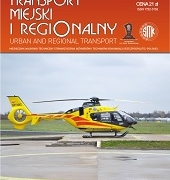 SITK RP
SITK RP 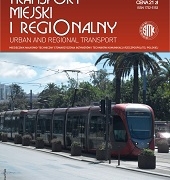
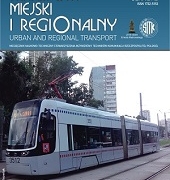
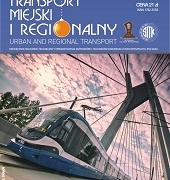 SITK RP
SITK RP 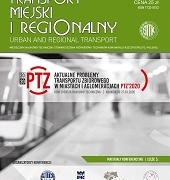
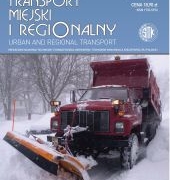 SITK RP
SITK RP 
 SITK RP
SITK RP SITK RP
SITK RP